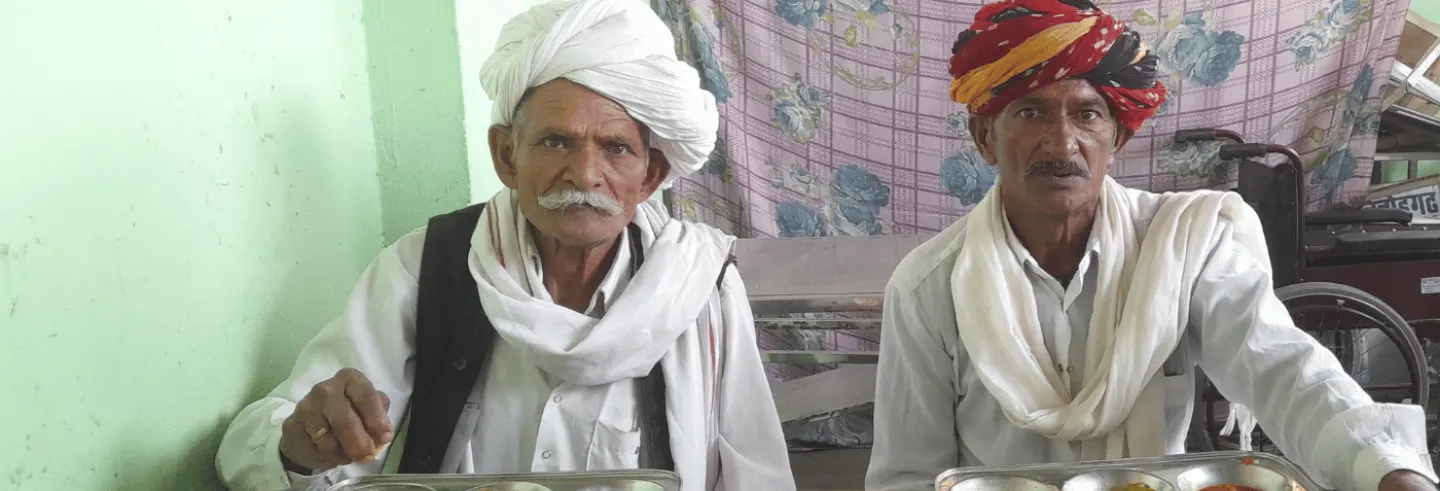On my way to Jaipur to pilot test questionnaires for a survey of canteens in select cities, I had dinner on the Vande Bharat train. The next day, I ate at an Indira Rasoi canteen. My first thought was that the rotis at the Indira Rasoi were better than those on the Vande Bharat. In Chennai, the Amma Unavagam canteen we visited during the training workshop had run out of lunch, so we ate at a well-known chain of restaurants. The following day, however, I had lemon rice at an Amma canteen. It was better than the sambar rice I had at the restaurant.
Canteens such as Indira Rasois and Amma Unavagam provide freshly cooked meals at subsidised prices (Rs 8 and Rs 5, respectively). J. Jayalalithaa, Tamil Nadu’s chief minister in 2013, created a buzz around them when she set up Amma Unavagam (Amma canteens) to serve idlis for Rs 1 each. Following this, more states have initiated similar schemes.
Before the Covid-19 pandemic, such interventions were triggered by episodes of high food inflation. Once inflationary pressures eased off, canteens faded from public memory. During the pandemic, in response to the humanitarian crisis caused by lockdowns in 2020, canteens made a comeback. 1In 2021, the Supreme Court of India took note of the role of canteens for food security and issued orders on setting up community kitchens. For instance, starting with just over 200 canteens in August 2020, Rajasthan had roughly 1,200 Indira Rasois (now called Shree Annapurna Rasois) by 2023. It planned to further expand them into rural areas.
Canteen survey 2023
Canteens have received little attention in spite of being widespread (see map below). Though canteens in Tamil Nadu and Karnataka have been around since 2013 and 2017, respectively, few systematic studies of the schemes exist. In late 2023, when Rajasthan’s Indira Rasois were barely three years old, the state had an Assembly election. The trajectory of canteens in Karnataka and Tamil Nadu – of policy and budgetary neglect once the political party behind it lost power – made it important to document Rajasthan’s experience.
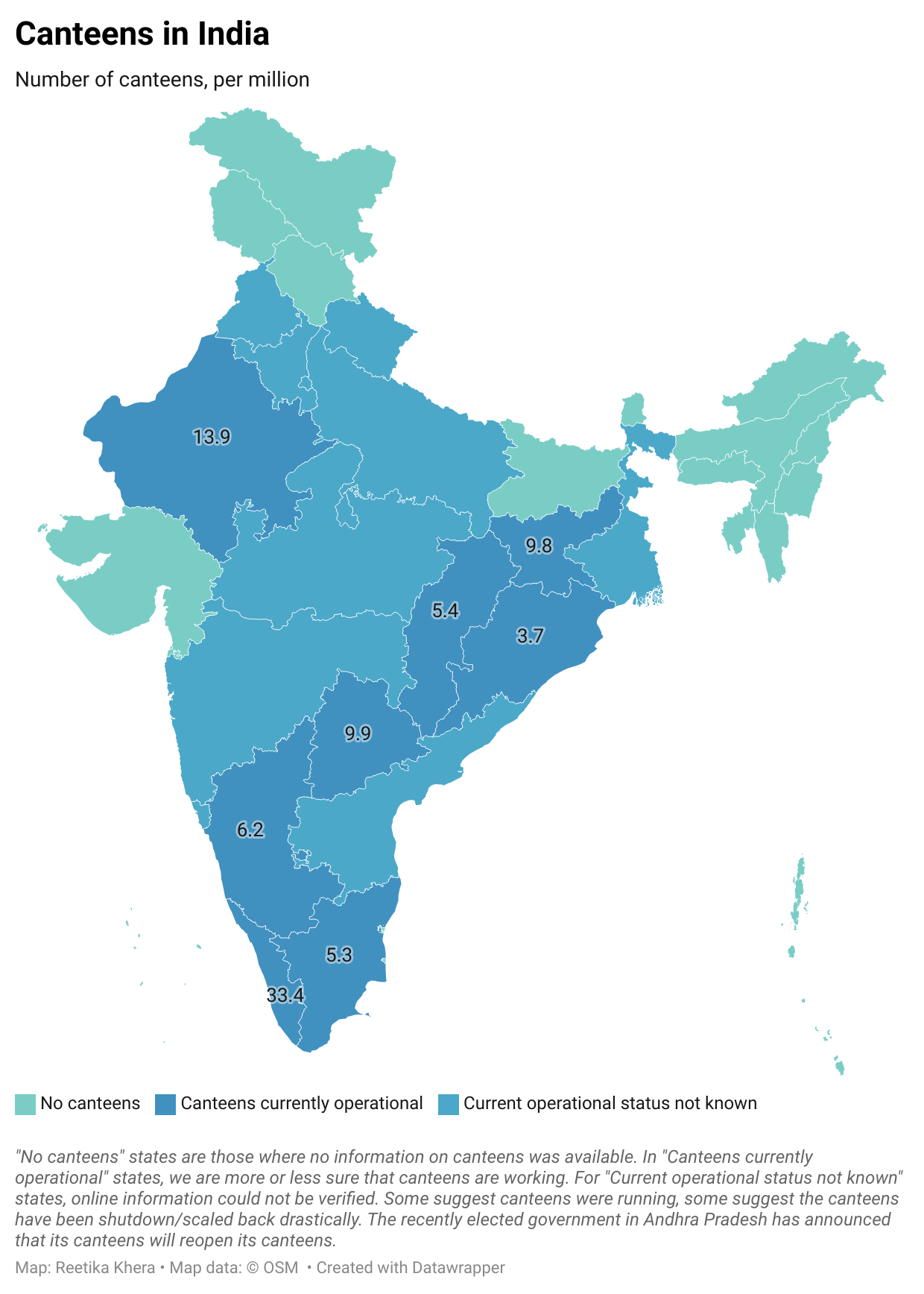
We conducted the Canteen Survey 2023 in three states – Amma Unavagams in Tamil Nadu, Karnataka’s Indira canteens, and Rajasthan’s Indira Rasois. The survey was undertaken in November–December 2023 to understand the potential of such a social policy intervention, how it was actually implemented, and to see if there were any possible inter-state policy lessons. It covered 12 cities: Ajmer, Bikaner, Chittorgarh, Churu, Jaipur, and Udaipur in Rajasthan, Bangalore, Bellary, and Mysore in Karnataka, and Chennai, Coimbatore, and Vellore in Tamil Nadu. In all, we surveyed 174 canteens selected through random sampling and 704 guests (see Appendix for details).
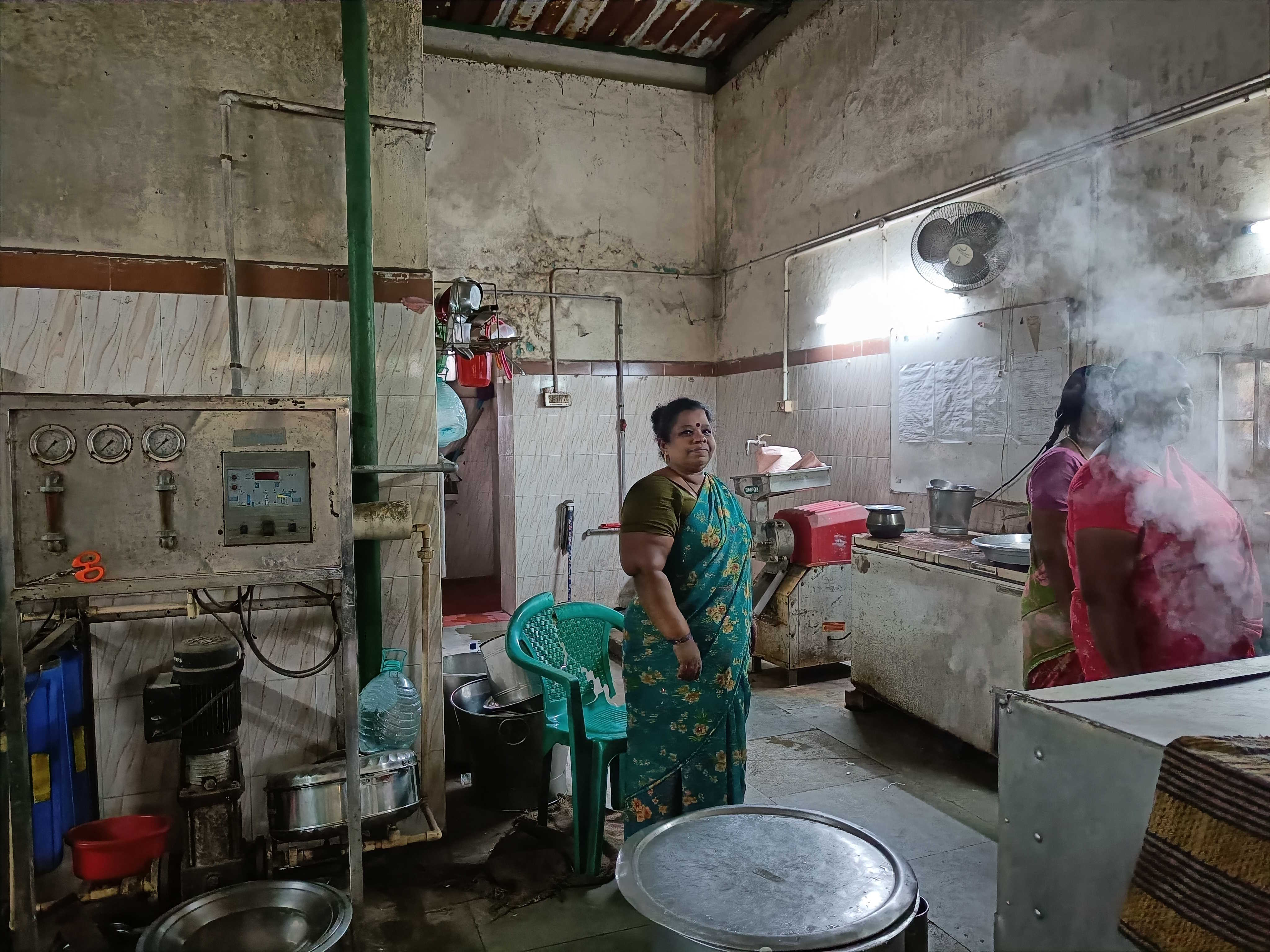
Why are canteens important?
Some ask why we need canteens to provide subsidised meals to people when 80 crore of the poor get free rations through the public distribution system (PDS). Why not expand the PDS coverage, they say, rather than have 'yet another' scheme for food security. 2To clarify, in most states, “free ration” only amounts to 5 kg of grains each month. Only a few state governments provide pulses, edible oil, and some other essentials. Another response is that we should focus on making “one nation, one ration card” or 'portability' work in the PDS.
Canteens and the PDS should be seen as complements, not substitutes for each other. PDS rations can boost food security for those who have cooking facilities. This is not always the case in urban areas, especially amongst migrant workers. Between 11% and 47% of our respondents had no cooking facilities at home. For them, even a portable PDS that provides dry rations would not guarantee food security.
Yet it would be wrong to view canteens through a lens of chronic or transient vulnerability alone. The food subsidy provided by canteens is substantial.
In popular discussions, canteens are characterised as a food security measure for the destitute, homeless, vagrants, and beggars. Indeed, such persons benefit hugely from canteens, and they comprised almost one-tenth of the respondents in our survey. A similar proportion reported being worried about sleeping hungry the week before the survey. Almost one-fifth (17%) of the respondents reported sleeping hungry sometimes before canteens opened in their areas.
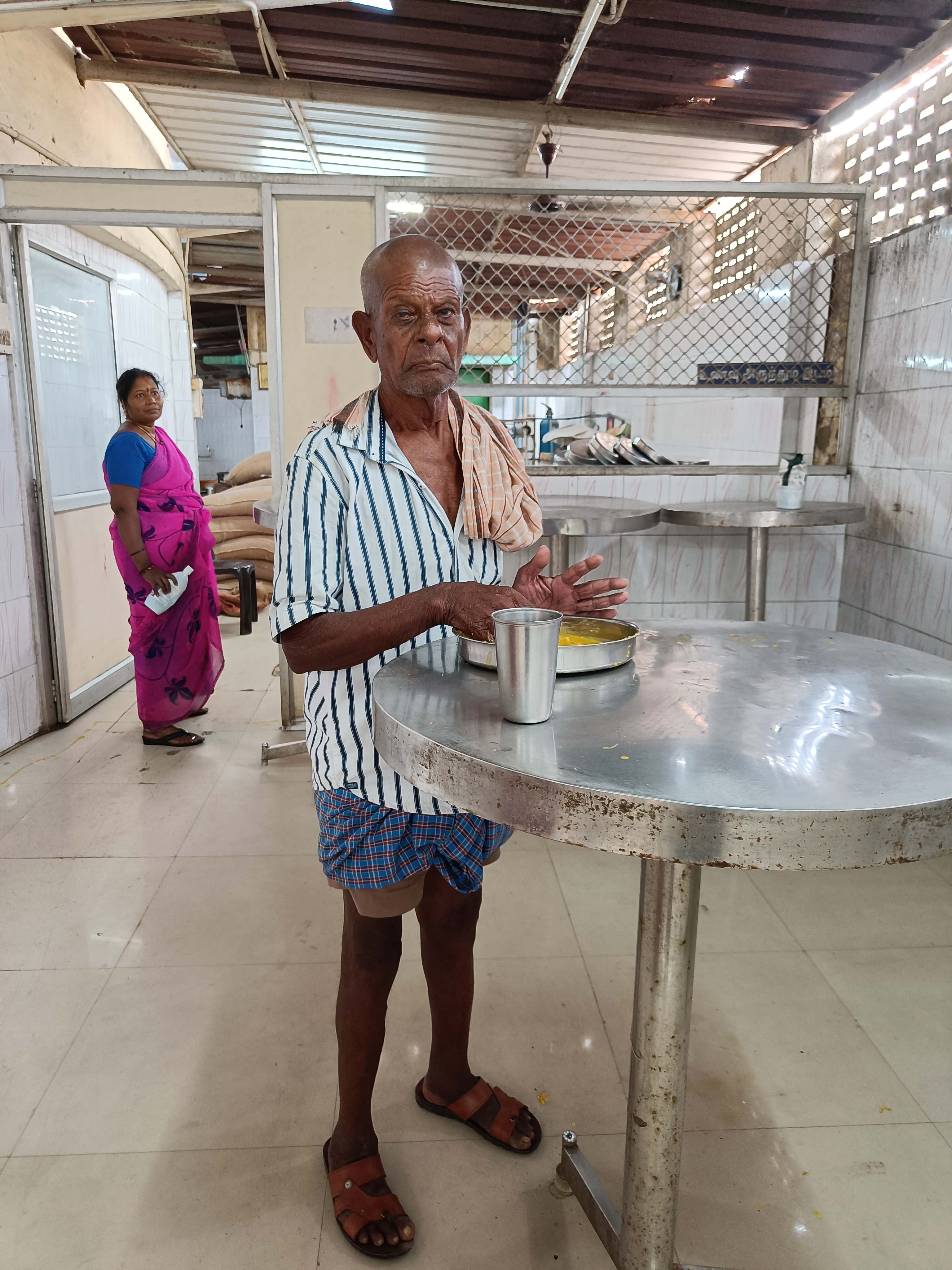
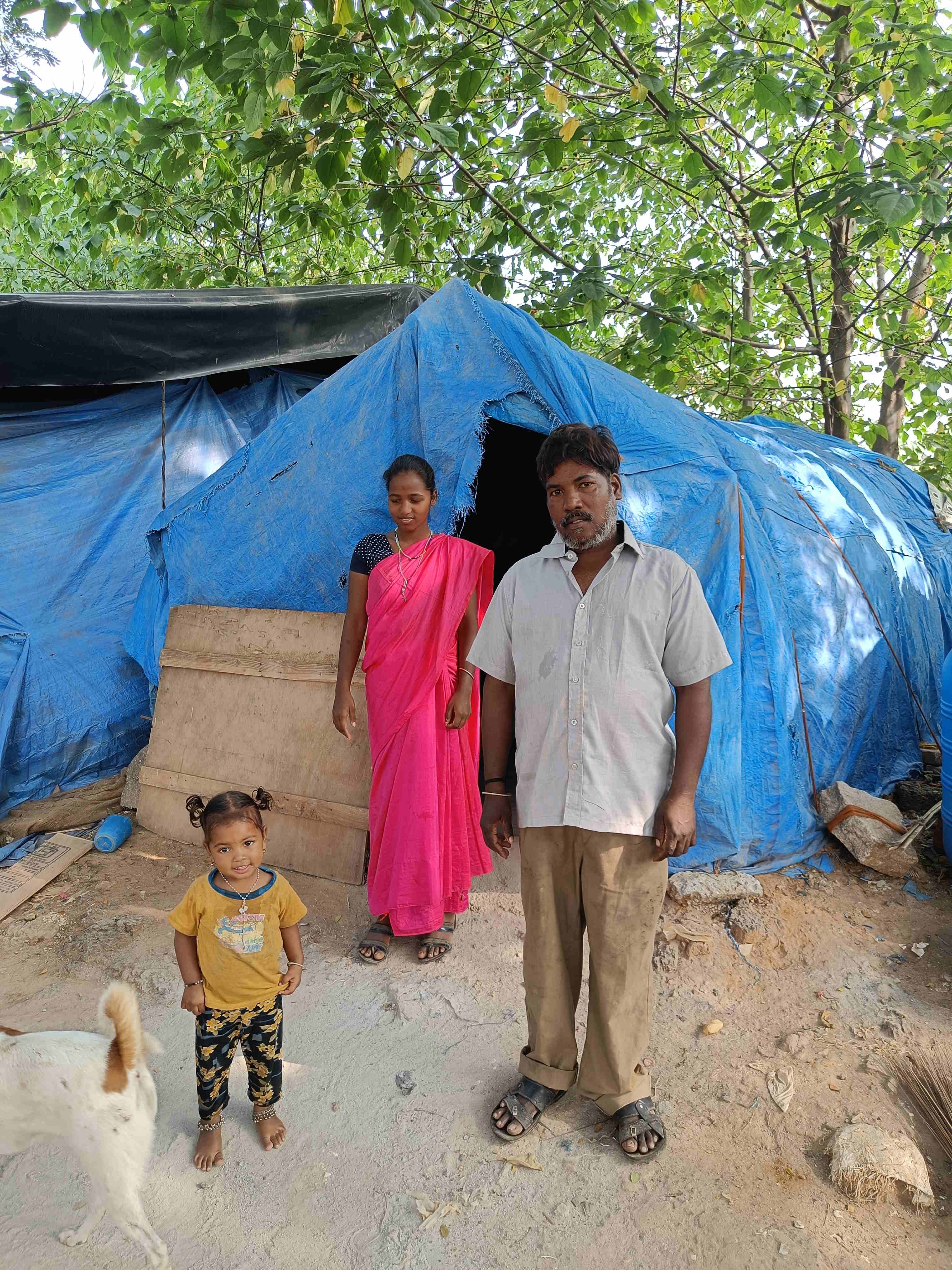
Apart from those for whom hunger and destitution are a chronic problem, there were those such as Haroon in Churu for whom it was a transient issue. The 46-year-old had been looking for work, but had been laid up because of a fractured foot. He had to sleep hungry for a few days, but a nearby canteen put an end to that.
Yet it would be wrong to view canteens through a lens of chronic or transient vulnerability alone. The food subsidy provided by canteens is substantial. At the time of the survey, the cost of a thali was Rs 25 in Rajasthan, while guests paid only Rs 8. 3According to a news report in Karnataka, the cost of three meals a day is Rs. 63, for which the state subsidy is Rs. 37—almost 60%. This makes canteens attractive to working people as well.
Canteens remedy several market failures. First, when food inflation is high, they provide an assured supply of food at fixed prices. Second, street food tends to be unregulated and not necessarily prepared in hygienic conditions. By setting some standards, canteens can ensure safe and hygienic food is available, with possible spillover effects on private street food vendors. Third, if state governments pay greater attention to nutrition, canteens can overcome the lack of affordable nutritious meals from street vendors. The limited availability of nutritious food is not merely because of cost, but also because of poor nutrition education. 4Though Kerala’s Janakeeya Hotels were not part of the survey, from publicly available information, they serve fish and meat regularly at a modest price.
A hidden benefit of canteens is the creation of democratic spaces, which has special significance in India, where caste, class, gender, and religion still influence social interactions. There are few public places in India where slum dwellers, the homeless, or those living in shelters, bus stands, and so on (12% to 28% of the survey’s respondents) share space with those who live in non-slum areas of a city (almost 50% of the respondents). Many respondents commended the inclusive nature of canteens. “From government servants to daily wage workers, all eat here together,” said a respondent in Bellary. “Everyone comes – those who have money and those who don’t”.
For women, canteens have significance because they create employment opportunities. Women were well represented amongst canteen staff (only 8% of the canteens reported no female staff member).
Similarly, the mixed background of the canteen staff and guests is noteworthy. Both guests and staff are from all social groups. Dalits (often excluded, especially when it comes to food), Adivasis, and Muslims comprised 16% of the guests in Karnataka, a quarter in Tamil Nadu, and one-third in Rajasthan. The canteen staff was also from mixed social groups. 5Data on the social groups of canteen staff is patchy, especially in Karnataka. This was sometimes because staff did not want to share this information, and sometimes because investigators hesitated to ask. In Rajasthan, only one-tenth of the canteens had no worker from marginalised groups, but in Tamil Nadu, the proportion was higher (around 30%). They were employed as cooks, helpers, and as cashiers at billing desks, suggesting that there was no segregation in the roles assigned to workers.

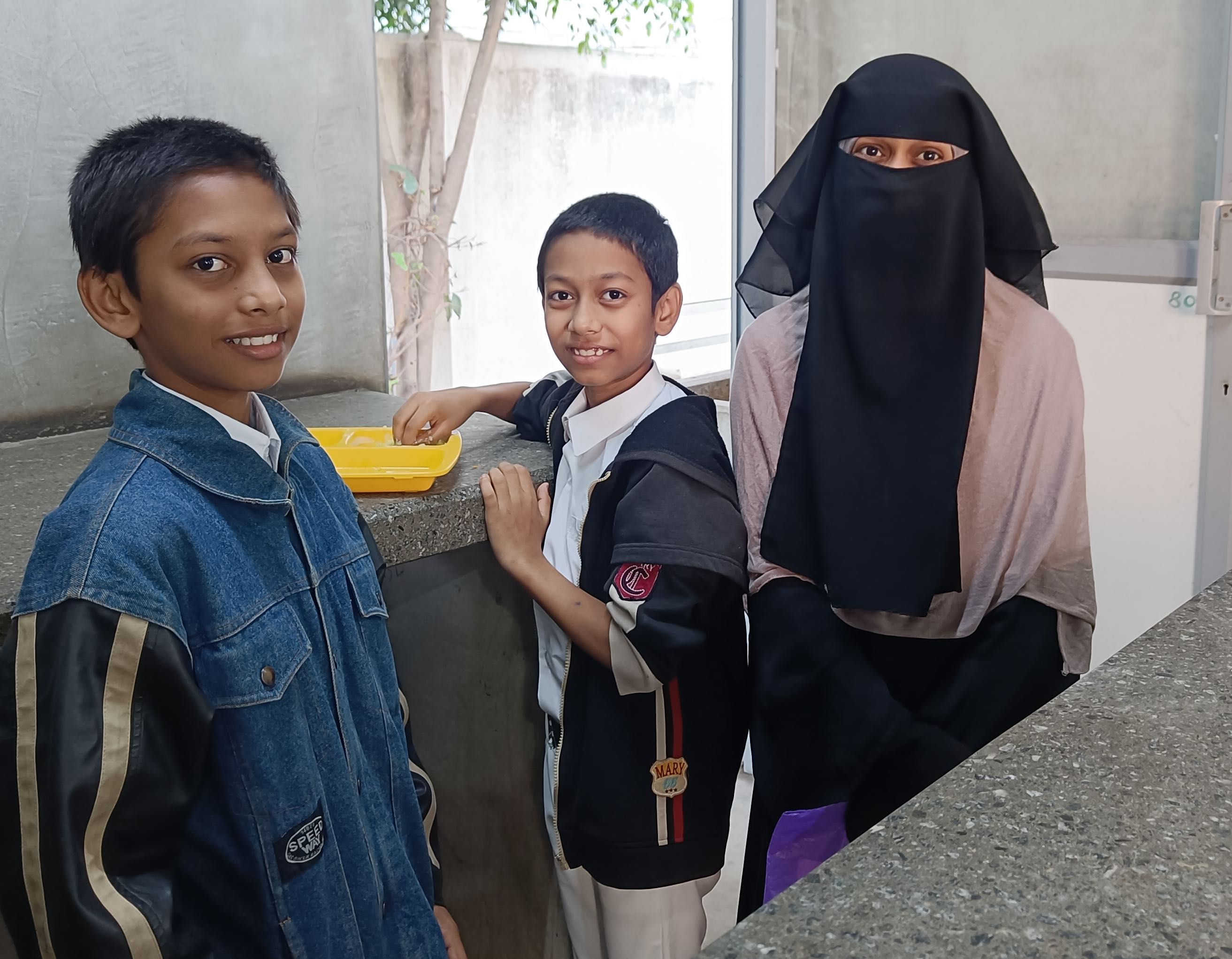
For women, canteens have significance because they create employment opportunities. Women were well represented amongst canteen staff (only 8% of the canteens reported no female staff member). In Tamil Nadu, for instance, the entire staff comprises women. 6In Odisha, canteens are run by Mission Shakti, the state’s women’s self-help group movement, and in Kerala as well, where there are canteens run by Kudumbashree groups. In Rajasthan and Karnataka, the teams were mixed, though Rajasthan had more female employees than Karnataka. 7In Karnataka, it was not possible to find out the scale at which centralised kitchens employ women.
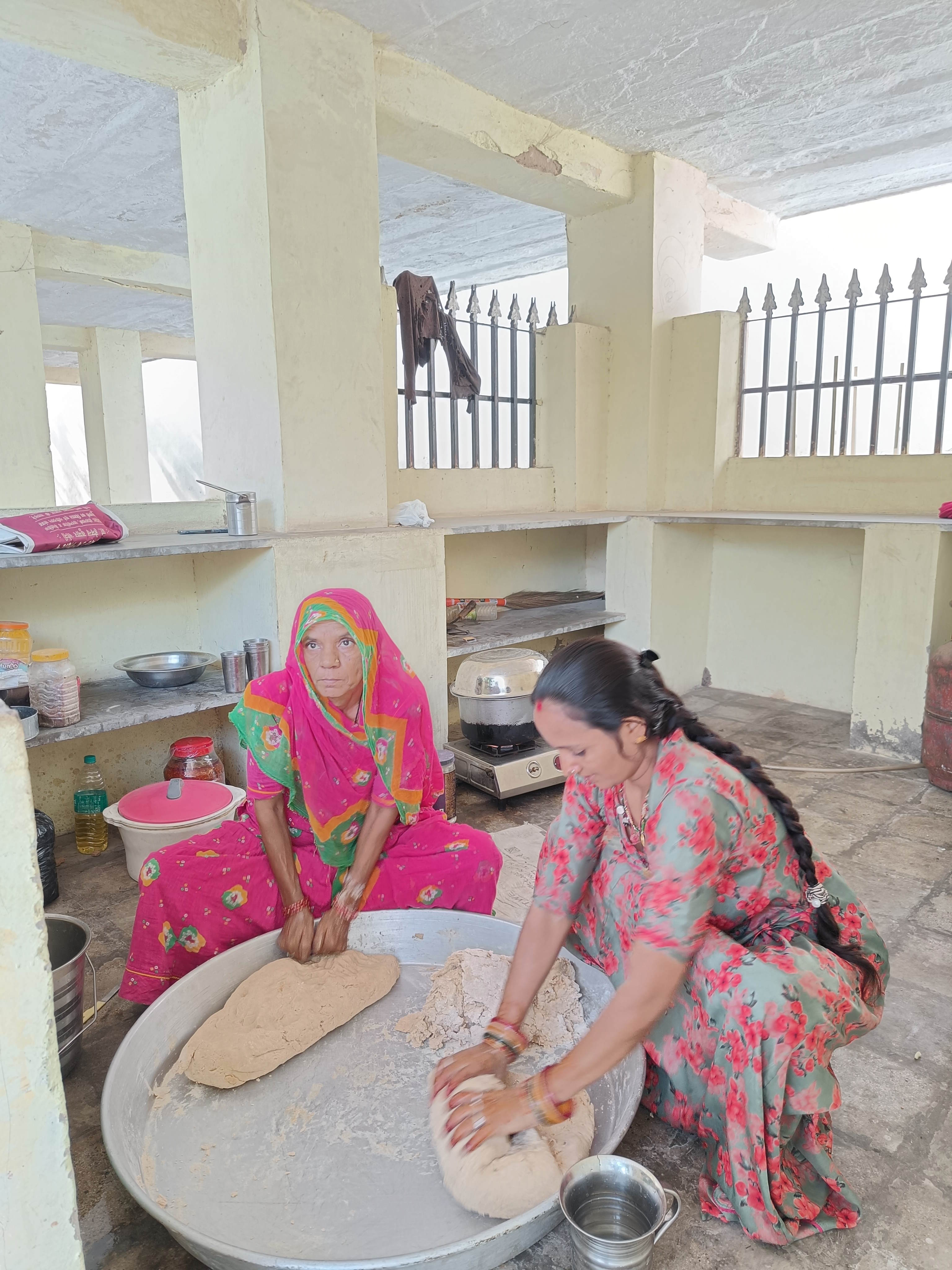
An Indira canteen in Bengaluru that is staffed by just one lady who manages all the tasks – from serving food, billing, handling cash, washing dishes and keeping the premises clean. (Video by Reetika Khera)
Who eats at canteens?
On the day before the survey, canteen staff reported that an average of 247 guests were served. There was little variation across the states, the lowest was 224 in Tamil Nadu. Canteens have regular (more than half the guests reported eating at the canteen every day or almost every day), sporadic, and first-time guests. First-time and sporadic guests include those accompanying patients to hospitals, visitors to the city for administrative or legal work, travellers from train stations and bus-stands, and so on. Amongst the regulars, there were mainly the following five groups.
1) Working Men
Working men were the largest group amongst our respondents. Within this group, there was a lot of diversity. Some were migrants to cities from within the state, but some were from faraway places. One Swiggy delivery worker (originally from Assam) in Bengaluru said that when he needs to eat, he looks for a “nearby Indira canteen” on Google Maps. Locals whose jobs require them to be mobile through the day (autorickshaw drivers and gig workers) also find canteens very convenient.
In Bengaluru, Subramanya from Kolar drove a school bus, which also served as his shelter in the city. He relied on Indira canteens for two meals every day.
In another instance, Sheikh Mohammed had a permanent job as a driver with the Bruhat Bengaluru Mahanagara Palike (BBMP) but his wife had gone home to deliver their child. So, he had been depending on a canteen for his meals for three months. Yet others lived in accommodation without cooking facilities or had very little time to cook for themselves.
For instance, in Bengaluru, Subramanya from Kolar drove a school bus, which also served as his shelter in the city. He relied on Indira canteens for two meals every day. Another guest we met at a canteen was there because his cooking gas ran out. Yet another, V. Ravi, had become a regular after his mother died, and he was appreciative of the serving staff.
2) Women
Amongst guests, women were a minority, comprising only 9% to 13% of the total. Canteens provided relief to them in more ways than one. Since women are responsible for cooking at home, each meal eaten by a family member at a canteen saved them some cooking time. This was important for working women who combined paid work outside the house with household responsibilities.
On a Sunday in Chennai, several male respondents were having breakfast at a canteen. When asked why they were doing so, they said that it was their working wives’ weekly off day, and they did not want to disturb them on a Sunday for breakfast. They planned to take a “parcel” home for their wife and others at home.
In Bengaluru, Vanita, a domestic worker, was the sole earning member in her family since her husband had an accident and was unable to earn, and had taken to drinking. She had gone to her children’s school, but had stopped for a quick bite at the Indira canteen.
3) The elderly
In all the states surveyed, the teams met very vulnerable elderly people. In Tamil Nadu, one-fifth of the guests were aged 60 years and more, much higher than Karnataka (6%) and Rajasthan (8%). For them, the canteens provided a simple, easily digestible meal at an affordable price. Quite importantly, canteens were also a safe and social space, with some sense of community. Several canteen workers recognised them and would set food aside for them.
4) Individuals with difficulties
In each state, we met people who either openly admitted to mental health issues or implied it, or whose relationship with their family, especially spouses, was strained, and so on. Though not substantial in number, they are nevertheless worth mentioning because canteens play an important role in their lives. Canteens made it possible for them to eat home-cooked food, with dignity, and be less of a burden on their hosts.
A pious Sudhakar used the canteen when there were fights at home. The Indira canteen was “like God, like a temple” for him, he said, and the food was “prasada.”
Kuppu, in Chennai, was a 70-year-old widow. Though she stayed with her family, the relationship was strained and fights were a regular occurrence at home. Besides this, there was economic distress. They had moved to Chennai when they lost their land because of an unpaid debt, and she could no longer work because of illness. If she did not get food at home, she resorted to an Amma canteen.
Selliah, 72, used to make a living by selling sweets. He no longer works and was separated from his family, but his son gave him Rs. 1,500 each month. A regular at an Amma canteen, he was lonely, hard up for money, and teary eyed when we spoke to him.
In Bengaluru, there was a reasonably well-to-do sandstone supplier, who had a strained relationship with his family and was living with his sister. He ate regularly at a canteen to be less of a burden on his sister. And a pious Sudhakar used the canteen when there were fights at home. The Indira canteen was “like God, like a temple” for him, he said, and the food was “prasada.”
5) Students
In most of the cities surveyed, there were some canteens near colleges or universities. More than one-tenth of their guests were students. For students in hostels or in paying guest accommodation, the canteens were a godsend. Besides being affordable, they appreciated it that the food tasted like ghar ka khana (home-cooked food). In fact, guests across the board mentioned that canteen food was homely.
Youngsters from far and wide who had come to train at the Churu Sports Stadium at a canteen in the town. They said it got their vote because of good dal (protein, essential for athletes) and maa ka pyaar (mother’s love). (Video by Reetika Khera)
Scope for improvement
While there are many things in canteens that could do with improvement, we highlight three major concerns here: ensuring that canteen menus are nutritious, doing away with surveillance practices that undermine the goal of providing good food with dignity, and making sure that petty politics do not disrupt the functioning of canteens.
Nutritious and adequate food
The most important area where improvement is necessary is the menu, especially the provision of nutritious food such as eggs, yoghurt, buttermilk, fresh vegetables, and a variety of grains. At the very least, some items can be provided as top-ups at cost price.
When suppliers have religious convictions (as a supplier of school meals in Karnataka had), they are able to prevail upon state governments to keep eggs off the menu.
In Rajasthan, cultural factors, including a high proportion of vegetarians in the population, means that canteen meals are vegetarian: rotis, dal or kadhi (a yoghurt-based preparation), and one sabzi (cooked vegetable). At some canteens, we saw guests who brought in their own buttermilk or yoghurt.
When canteens began in Karnataka, they turned to centralised kitchens, possibly because the state already relied on them for several government schemes. Contractors (religious or otherwise) are not well suited for such government programmes because they try to minimise expenses. 8Other problems include the probability of food running out. As food is prepared centrally and transported to each canteen, a fixed number of meals can be provided and no reheating is possible. By the time the last meal is served, it tends to be cold and less palatable. This probably explains the rice-based menu at Indira canteens: sambar-rice, masala-baath, bise bele baath, and the like. Further, when suppliers have religious convictions (as a supplier of school meals in Karnataka did), they are able to prevail upon state governments to keep eggs off the menu.

In Tamil Nadu, there is neither resistance to animal proteins nor the problems arising from centralised kitchens. Eggs are widely supplied in other government programmes (school meals and anganwadis). The present neglect of canteens could be because the current political dispensation is in a bind. It does not want to shut down a popular scheme, but neither does it want to put money into the scheme that is so closely associated with a political rival. 9Canteen staff had many ideas for small tweaks (for example, adding chutneys to go with idlis, instead of sambar everyday; serving tea and coffee to increase footfall through the day; and providing eggs as a top up). No innovation in the menu is officially permitted. In any case, some of these changes require greater budgetary support.
Surveillance practices
In Karnataka and Rajasthan, certain surveillance practices, ostensibly to curb corruption, were disturbing. In Bengaluru, marshals are deployed at canteens. They were largely redundant, tasked with (say) tracking the number of meals supplied and consumed, which could easily be done by the other staff. They were the highest paid staff members at the canteen, getting Rs. 25,000 a month, in addition to an army pension. The survey team found their presence, in army overalls and boots, distasteful.
Our survey was not designed to capture corrupt practices, and they may be a serious issue, which needs remedies other than the ones now in use.
In Rajasthan, on arrival, guests have to register by submitting personal details (name, mobile number, and name of father or husband) and get photographed (uploaded to a server). This is meant to prevent inflation of the number of tokens issued without feeding people. Many guests need more than one token (five-six rotis) to fill their stomachs (one-fifth of our respondents had bought more than one token). In such cases, the number of tokens issued would be greater than the number of guests, with no corruption taking place.
In both cases, the safeguards were being implemented for form’s sake rather than actually controlling corruption. Our survey was not designed to capture corrupt practices. They may be a serious issue, which needs remedies other than the ones now in use.
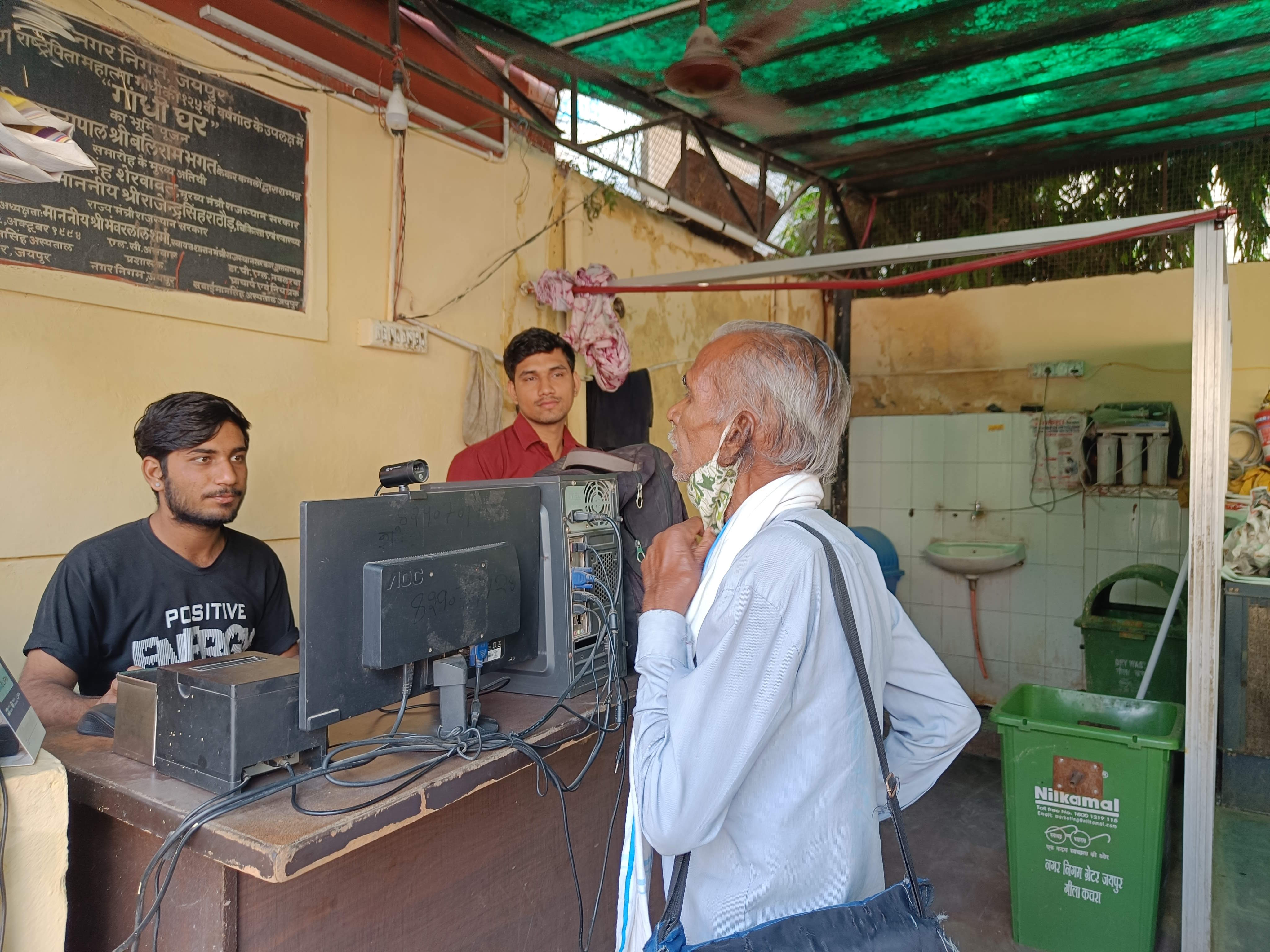
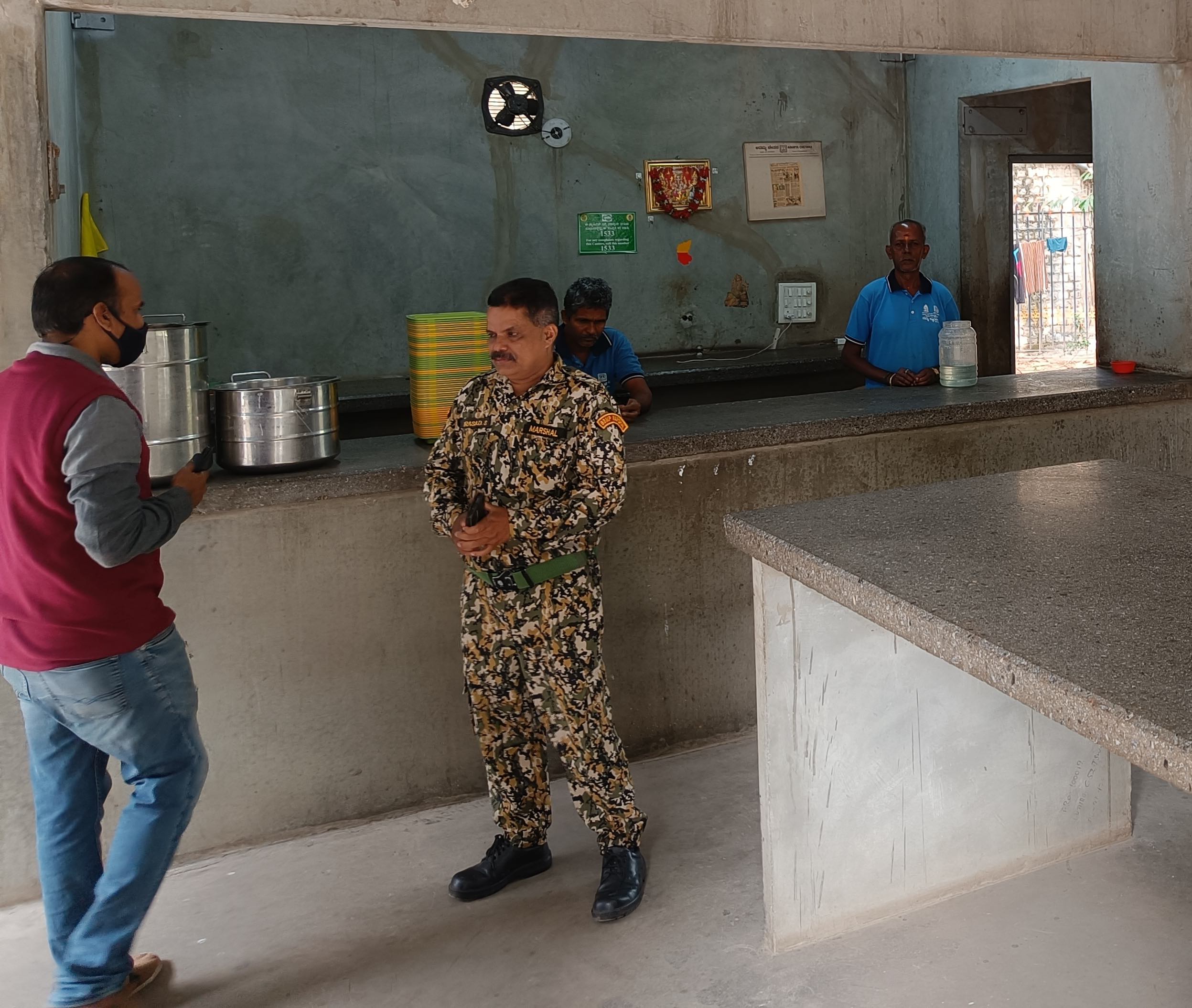
Political apathy
Political one-downmanship appears to be a longstanding issue with canteens, going back to the zunka bhakar kendras of the mid-1990s in Maharashtra. Andhra Pradesh is another example of this political yo-yo. When the YSRCP came to power, Anna canteens (associated with TDP) were shutdown, en masse. Now, with TDP back in power, a resumption has been announced. In Karnataka, once the Bharatiya Janata Party (BJP) came to power, Indira canteens were neglected, with staff layoffs and no dinner at some.
When we arrived in Bengaluru for the canteen survey, several residents asked us to double check if they were still operational. Even after the Congress returned to power, some of the promised changes (for example, the introduction of a new menu, including ragi mudde) had not been implemented at the time of the survey.
In Tamil Nadu, many canteen workers felt that the Dravida Munnetra Kazhagam (DMK) government was 'tolerating' the canteens and they were nervous about speaking. In Chennai, workers were bitter that their wages had not increased since they were employed in 2013 or 2015 (they were paid Rs 300 as a daily wage at the time of the survey). 10Recently, an increase to Rs. 325 per day has been announced. The infrastructure of many canteens was in poor condition, with water filtration systems and deep freezers not being repaired, dusty or illegible information boards, and no improvements in seating arrangements.
The staff tended to blame the present government, though the neglect possibly set in earlier. After all, no change in the menu or increase in wages occurred between 2013 and 2021, when the party to which the workers owed their jobs was in power.
Soon after the survey in Rajasthan, in the state’s assembly election, a new government headed by the BJP was voted to power. It has renamed the scheme Shree Annapurna Rasoi and imposed an arbitrary cap on the number of tokens that can be issued. This seemingly innocuous measure could sabotage the scheme. It creates a situation where guests are turned back because the food runs out, and the canteens acquire a reputation for not being reliable. This leads to a decline in footfall, which, in turn, is used to justify the caps.
Concluding remarks
Canteens deserve more funds. In 2023, Karnataka’s budget for Indira canteens was Rs 100 crore, which was what Tamil Nadu budgeted for canteens in 2016. (For a comparison, that was what N. Chandrababu Naidu reportedly spent on furniture and helicopters at the time.) Today, Tamil Nadu’s state budget for canteens is lower than it was in 2016.
Canteens also deserve guaranteed funding so that they become a regular feature of the social protection framework in India. In 2023-24, Rajasthan allocated Rs 700 crore for Indira Rasois. It helped guarantee a dignified meal for millions, created thousands of job opportunities, and fostered a sense of oneness and well-being among many. Since the change of government in Rajasthan, the budget has been halved. One way of securing the funds needed may be to include it under the National Food Security Act, 2013.
By providing a revamped and expanded menu for canteens (including nutritious top-ups such as eggs or buttermilk, and adding tea and coffee), a better infrastructure, and fair wages to the staff, the state governments of today could not only demonstrate political magnanimity but also seize ownership of a very useful scheme.
I thank all the volunteers in the three survey states. Taha Ibrahim, Md. Asjad, Shabnam, Sookthi K, Aishwarya N. and Karuna M. contributed to the pre- and post- survey work, as well in the data collection. For feedback on earlier drafts, I thank Krishnapriya Choragudi, Md. Asjad, Aishwarya N., Karuna M. and Jean Drèze. Astha Sansthan Udaipur, Alternative Law Forum Bengaluru and Madras Institute of Development Studies provided invaluable logistical support during the surveys.
Reetika Khera is the Narendra and Chandra Singhi Chair Professor (Economics) at the Indian Institute of Technology, Delhi.

